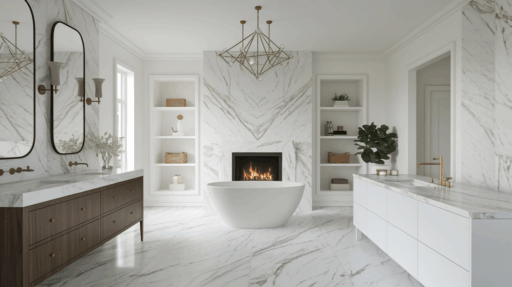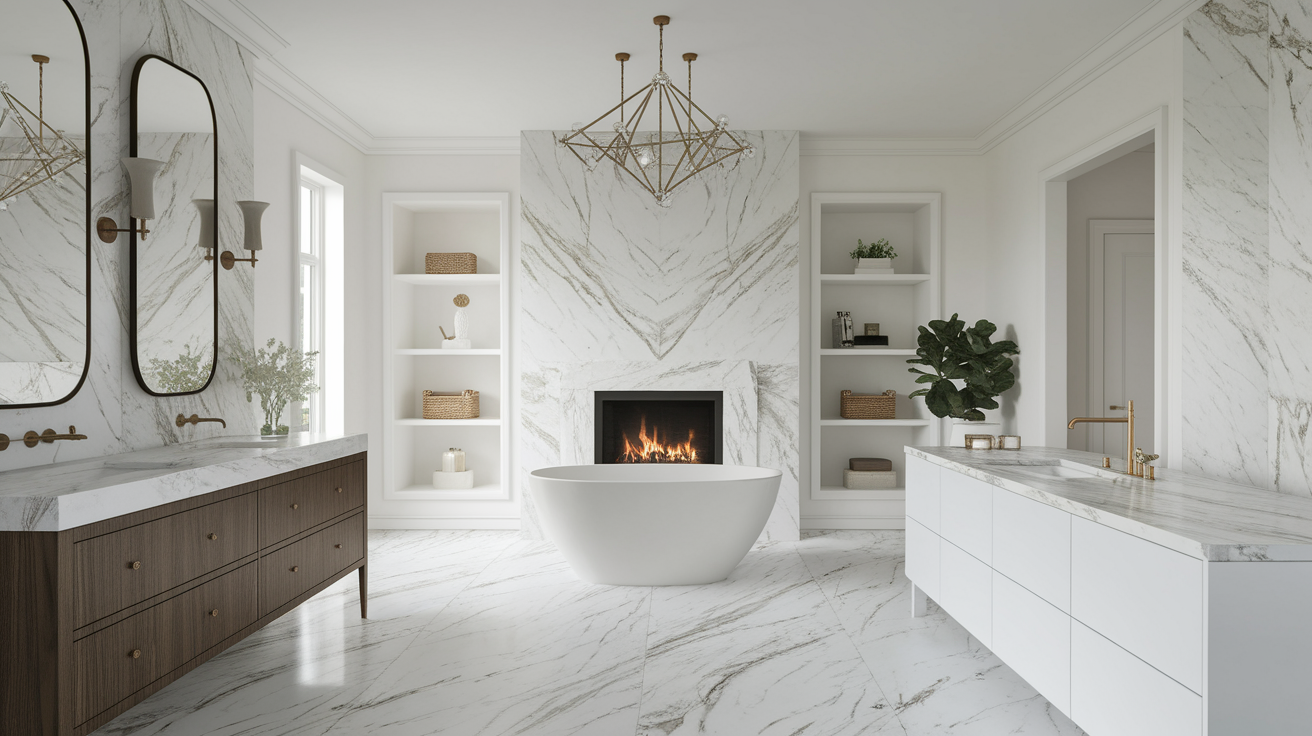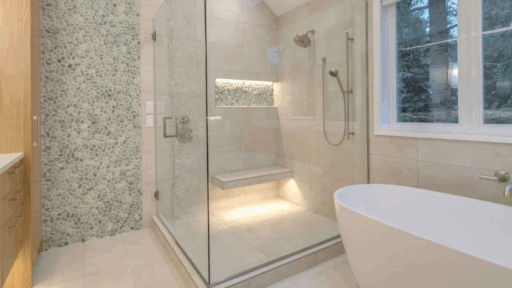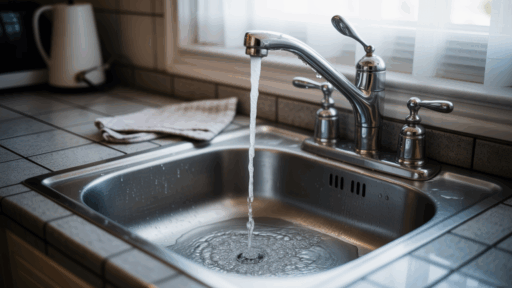Cultured marble is a popular choice for homeowners looking to achieve the luxurious look of natural marble without the high price tag.
Made from a blend of crushed marble dust, polyester resin, and pigments, cultured marble offers durability, easy maintenance, and a wide range of design options.
It’s commonly used in bathrooms, kitchens, and commercial spaces due to its versatility and cost-effectiveness.
While it mimics the beauty of real marble, it has distinct differences, including its non-porous surface, ease of cleaning, and the potential for scratches or heat damage.
Learn how cultured marble measures up and if it’s the best fit for your space and lifestyle.
What is Cultured Marble
Understanding cultured marble is essential for homeowners considering this popular alternative to natural stone for their renovation projects.
Cultured marble is a manufactured composite material made from crushed marble dust, polyester resin, and pigments.
This engineered surface mimics the appearance of natural marble while offering enhanced durability and affordability.
The manufacturing process involves mixing marble particles with binding agents, then casting and curing the mixture in molds to create seamless surfaces for countertops, vanities, and shower surrounds.
This engineered material offers homeowners a practical solution for achieving the luxurious look of marble without the premium price tag.
Common Uses in Home Design
Cultured marble applications demonstrate their versatility across various home improvement projects and design styles.
Bathroom Applications
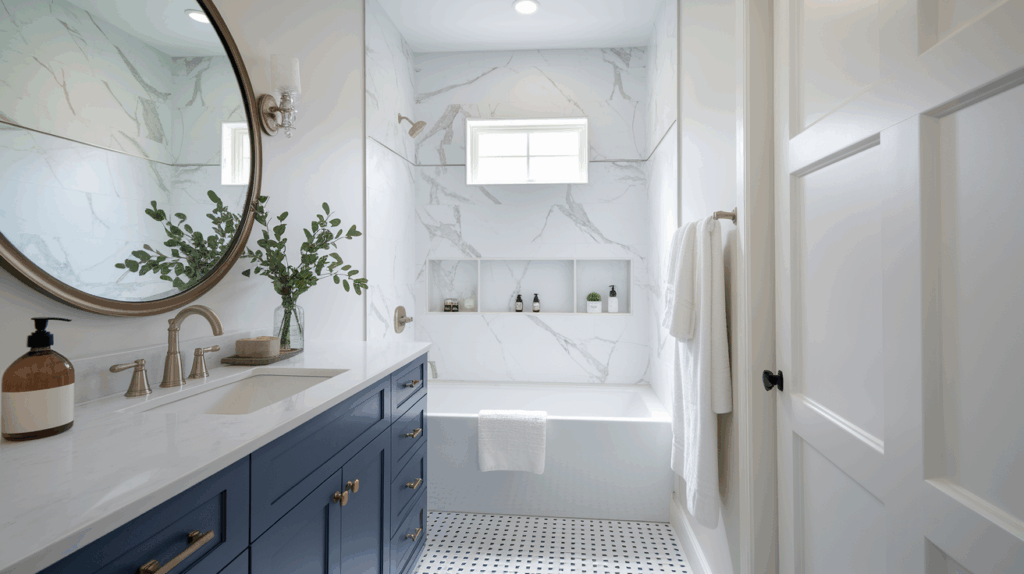
Cultured marble is commonly used in bathrooms for its seamless finish and easy-to-maintain surfaces.
- Vanity countertops with integrated sinks and backsplashes eliminate grout lines
- Shower walls and surrounds with custom corner shelves for convenience
- Bathtub surrounds with seamless installation and built-in soap dishes
Kitchen Uses
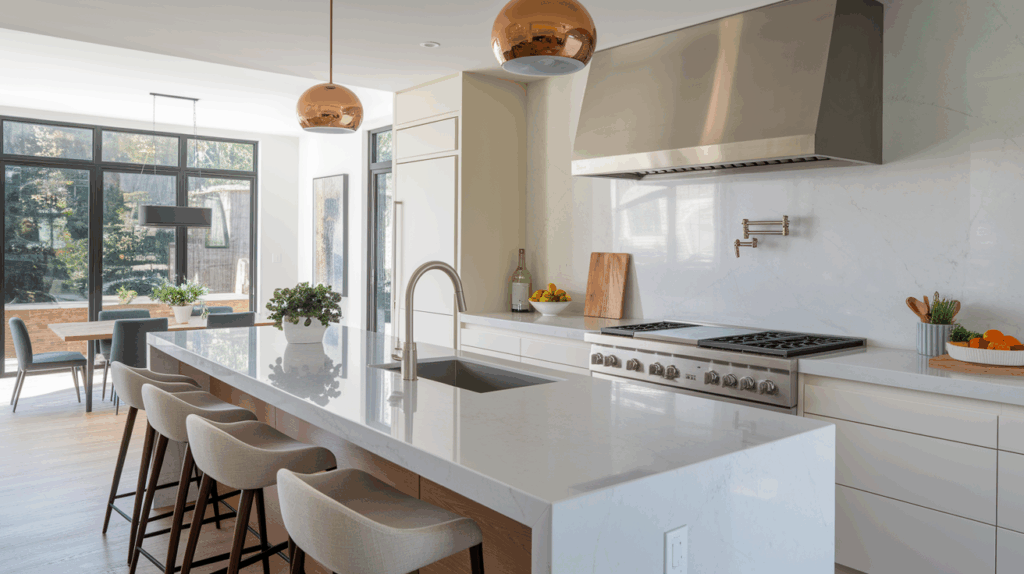
In kitchens, cultured marble provides durability, sleek look, and low-maintenance surfaces for countertops and more.
- Kitchen countertops with seamless edges and integrated drainboards
- Custom breakfast bars and peninsula surfaces for elegant dining areas
- Island tops with waterfall edges and integrated cutting boards
Commercial Applications
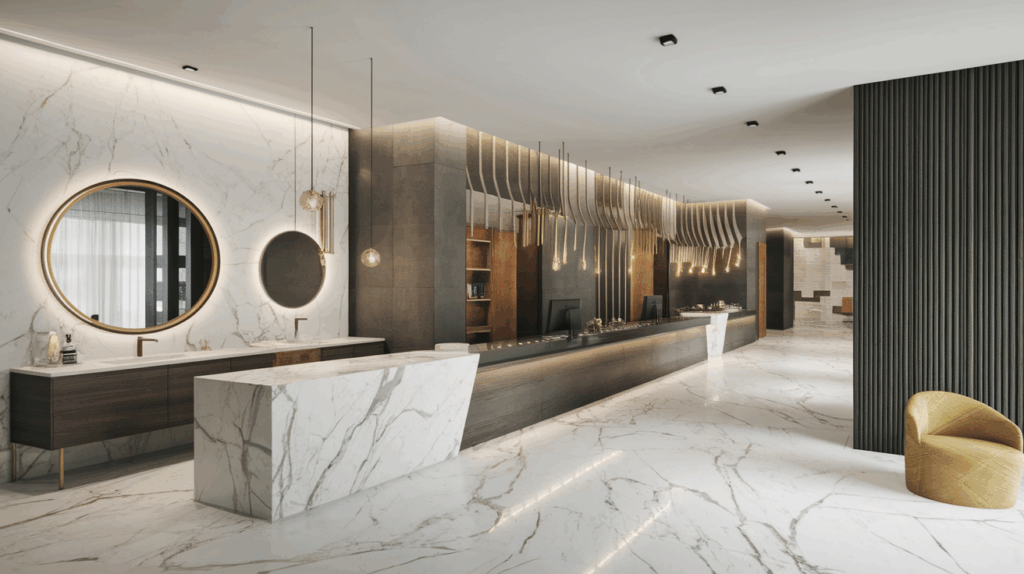
Cultured marble is favored for commercial spaces due to its durability and ease of maintenance in high-traffic areas.
- Hotel bathroom vanities and reception desk surfaces for heavy daily use
- Restaurant counters and food service preparation areas with easy sanitization
- Office reception desks and lobby accent walls for a professional appearance
Specialty Installations

Due to its moldability, cultured marble is used in a variety of specialty installations, adding elegance and function to unique features.
- Fireplace surrounds and hearth extensions without heat damage concerns
- Window sills and decorative wall panels for versatile design applications
- Stair treads and custom architectural features showcasing moldability
These diverse applications showcase cultured marble’s adaptability to both residential and commercial design requirements across multiple room types.
Pros and Cons of Cultured Marble
A comparison helps homeowners evaluate whether cultured marble meets their specific project requirements and expectations.
Pros | Cons |
|---|---|
| Cost-Effective | Scratches Easily |
| Costs 40-60% less than natural marble, making luxury aesthetics accessible to budget-conscious homeowners | Resin-based surface can scratch more easily than natural stone when exposed to sharp objects or abrasive materials |
| Non-Porous Surface | Heat Damage |
| Resists stains and moisture absorption without requiring regular sealing treatments like natural marble | Exposure to temperatures above 200°F can cause permanent damage including discoloration, cracking, or surface melting |
| Seamless Installation | Limited Repairs |
| Can be molded into continuous surfaces without visible joints, creating a unified appearances with integrated features | Deep scratches, chips, or cracks often require professional restoration services that may not perfectly match original colors |
| Design Flexibility | Artificial Look |
| Available in countless colors, patterns, and finishes to complement any décor style with custom molding capabilities | May lack the authentic depth and natural character of genuine stone, appearing synthetic under certain lighting conditions |
| Easy Maintenance | Shorter Lifespan |
| Simple cleaning with standard household products without specialized care requirements or harsh chemical restrictions | Typically needs replacement sooner than natural stone alternatives due to wear and potential damage accumulation over time |
| Lightweight Material | UV Sensitivity |
| Easier handling and installation process reduces labor costs and structural support requirements compared to natural stone | Prolonged exposure to direct sunlight may cause yellowing, fading, or color changes that affect appearance |
Consider your budget, maintenance needs, and aesthetic goals when choosing between real and cultured marble. This comparison helps you make an informed decision based on your project’s requirements.
Real and Cultured Marble are Not the Same Thing
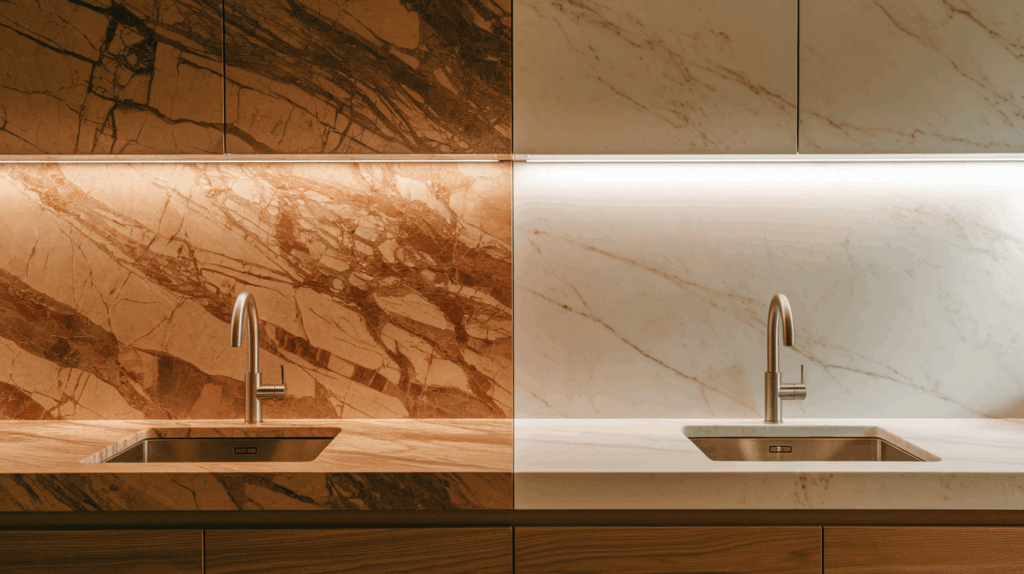
Understanding the fundamental differences between real and cultured marble helps homeowners make informed material choices for their projects.
Real marble is a natural stone formed over millions of years, known for its unique veining and premium cost. It requires extensive processing and regular sealing due to its porous nature, making it prone to staining.
On the other hand, cultured marble is a manufactured composite made from crushed marble dust and polyester resins, offering consistent patterns and colors at a more affordable price.
Its non-porous surface makes it highly stain-resistant and easier to maintain. Understanding these differences helps homeowners choose the right material based on performance, cost, and aesthetics for their projects.
Cleaning Cultured Marble
Proper cleaning techniques preserve cultured marble’s appearance and extend its lifespan through regular maintenance practices.
Daily Cleaning Steps
Step 1: Clear the Surface: Remove all items, debris, and standing water from the cultured marble surface to prepare for thorough cleaning.
Step 2: Rinse with Warm Water: Use clean warm water to rinse away loose dirt, soap residue, and surface particles before applying cleaning solutions.
Step 3: Apply Mild Cleaner: Mix a few drops of dish soap with warm water or use specialized cultured marble cleaner on the entire surface.
Step 4: Wipe with Soft Cloth: Gently clean using a soft microfiber cloth or non-abrasive sponge, avoiding circular motions that may cause scratching.
Step 5: Rinse Thoroughly: Remove all cleaning solution residue with clean water to prevent buildup that could dull the surface over time.
Step 6: Dry Completely: Use a clean, dry towel to remove all moisture and prevent water spots from forming on the surface.
Weekly Deep Cleaning
For deeper cleaning, use a baking soda paste for stubborn stains, followed by thorough rinsing and drying to restore the original luster.
Following these systematic cleaning steps maintains cultured marble’s beauty and prevents damage from improper maintenance techniques.
Conclusion
Cultured marble offers an affordable, durable, and versatile alternative to natural marble, making it a popular choice for home and commercial design.
Its non-porous surface ensures easy maintenance, while its flexibility in design and seamless installation provide a polished, high-end look.
However, cultured marble may be prone to scratches, heat damage, and UV sensitivity, and its lifespan is typically shorter than that of real marble.
Understanding the differences between real and cultured marble, as well as the pros and cons, helps homeowners make an informed choice based on budget, maintenance needs, and personal preferences.
What’s your experience with cultured marble? Share your thoughts and questions in the comments below!.

